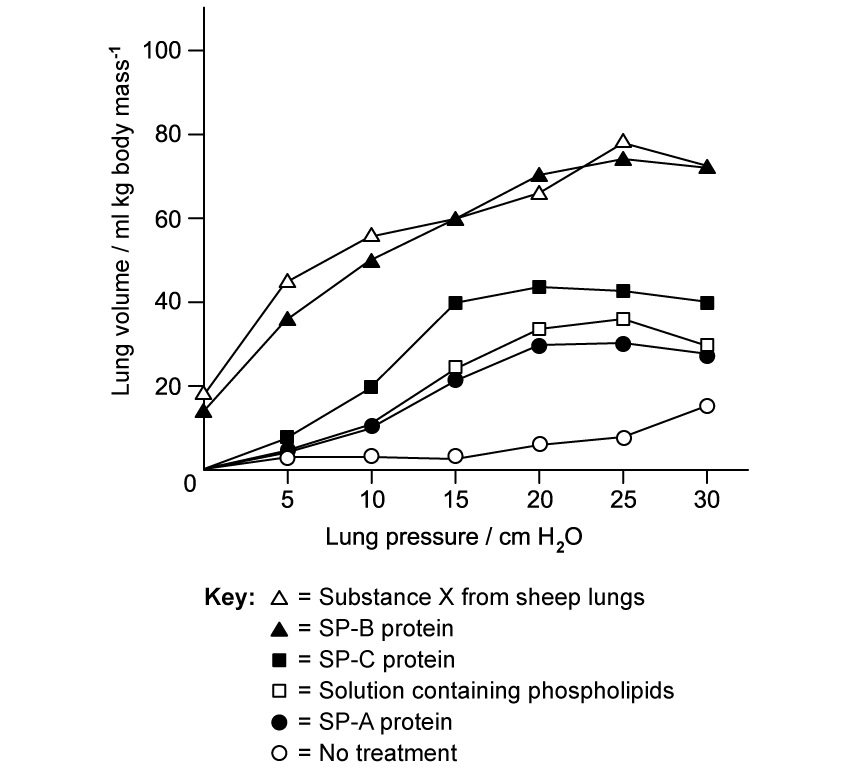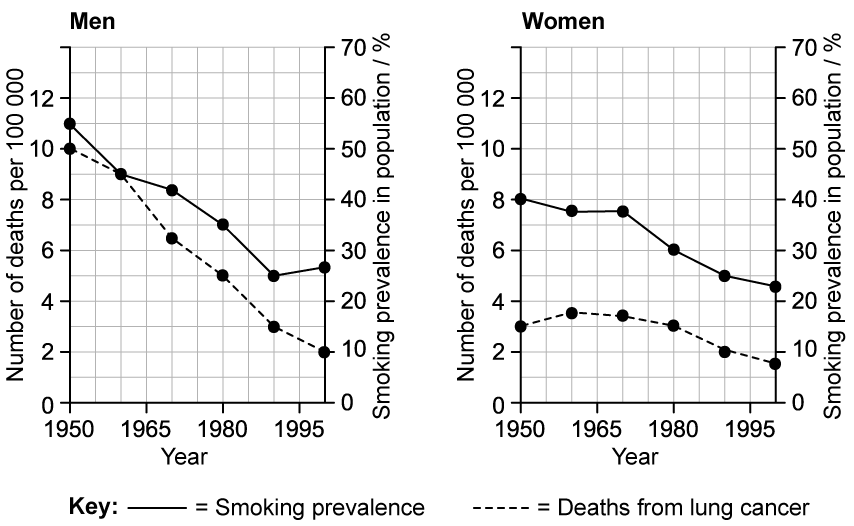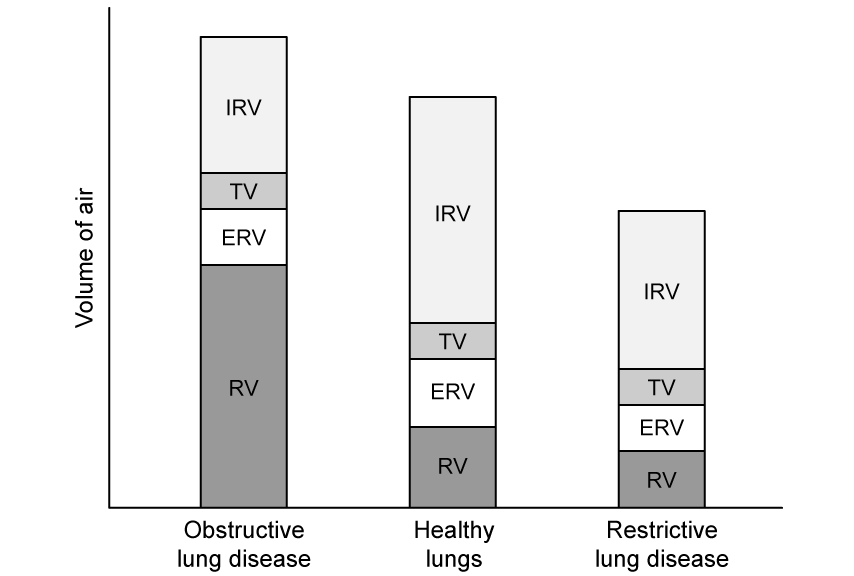Question 1a
Describe the pathway taken by a molecule of oxygen from the outside air to the blood of a human.
[3 marks]
Question 1b
Premature babies can suffer from a deficiency of a substance referred to here as substance X. This can lead to a condition known as respiratory distress syndrome (RDS). The image below shows the possible appearance of the lung tissue of an RDS patient (left) and the appearance of normal lung tissue (right).

Image courtesy of Atlas of Pulmonary Pathology, licensed under the Creative Commons Attribution-ShareAlike 2.0 Generic license, and adapted and redistributed under conditions found at https://creativecommons.org/licenses/by-sa/2.0/
Suggest the identity of substance X.
[1 mark]
[2 marks]
Question 1c
RDS can be treated by the administration of an alternative form of substance X to the lungs. The graph below shows the effect of different variations of substance X on the lung volume of rabbits at different pressures. The variations include substance X isolated from sheep lungs, as well as synthetic versions of substance X that contain its separate lipid and protein components. Note that cm H2O is a unit of pressure.
Use the information provided to explain why each of the following statements is incorrect:
Substance X is essential for lung expansion.
[1 mark]
ii)
Phospholipids are the active component of substance X.
[1 mark]
iii)
Substance X from sheep is the most effective treatment for RDS in premature babies.
[2 marks]
Question 1d
The form of substance X produced in mammalian lungs contains proteins known as SP-A and SP-D, which are known to be involved with the activation of phagocytes.
Suggest, with a reason, a symptom that would result from a deficiency of SP-A and SP-D proteins.
[2 marks]



